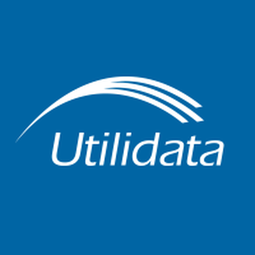
Technology Category
- Functional Applications - Remote Monitoring & Control Systems
- Sensors - Voltage Sensors
Applicable Industries
- Utilities
Applicable Functions
- Business Operation
Use Cases
- Energy Management System
The Customer
American Electric Power
About The Customer
Headquartered in Columbus, Ohio, American Electric Power (AEP) is one of the largest electric utilities in the U.S., serving more than 5 million customers in 11 states. In addition to their 5.3 million customers, they also operate over 38,000 miles of tra
The Challenge
Across the nation, utility companies, state regulators and policy makers are considering many potential solutions and strategies for managing an evolving power grid and energy industry. From policy measures like the Environmental Protection Agency’s (EPA) Clean Power Plan regulations, to the President’s first Quadrennial Energy Review, to infrastructure modernization efforts, utility companies and state regulators are in a period of intense progress and scrutiny.
Of these measures, the EPA’s Clean Power Plan is particularly significant. It aims to reduce carbon dioxide emissions from existing fossil fuel-fired power plants. Citing authority under Section 111(d) of the Clean Air Act, the EPA released the final regulations in August 2015, requiring states to develop and submit state plans to achieve the federal emissions reduction goals. The Clean Power Plan also fosters a spirit of state/federal collaboration urging states to work hand-in-hand with each other and the EPA to come to optimal reduction structures. Despite the debate over the legality of the EPA’s proposed plan, utilities and regulatory bodies are already analyzing the cost and benefits of a variety of measures to respond including coal plant conversions, renewable energy investments, energy efficiency programs and more.
The Solution
AEP deployed Utilidata’s VVO solution, AdaptiVolt™, across six 13.8 kV electric feeders originating at a substation in Gahanna, Ohio.
Using an RF mesh telemetry network, AdaptiVolt™ communicates with eight line voltage monitors (deployed on the distribution system’s primary), fifteen field-based switched capacitor banks, two banks of mid-line voltage regulators and six banks of three single-phase voltage regulators in the substation.
AdaptiVolt™ implements coordinated control of the voltage regulators and capacitor banks based on information it extracts from data it collects from all the field devices. Visibility and control of the AdaptiVolt™ system is provided to AEP system operators through their distribution management system user interface.
Over a one-year period starting in 2012, AEP and Utilidata conducted an extensive M&V test on their pilot project in Gahanna, Ohio in order to validate the energy savings and voltage reduction secured with the AdaptiVolt™ VVO solution.
Using an RF mesh telemetry network, AdaptiVolt™ communicates with eight line voltage monitors (deployed on the distribution system’s primary), fifteen field-based switched capacitor banks, two banks of mid-line voltage regulators and six banks of three single-phase voltage regulators in the substation.
AdaptiVolt™ implements coordinated control of the voltage regulators and capacitor banks based on information it extracts from data it collects from all the field devices. Visibility and control of the AdaptiVolt™ system is provided to AEP system operators through their distribution management system user interface.
Over a one-year period starting in 2012, AEP and Utilidata conducted an extensive M&V test on their pilot project in Gahanna, Ohio in order to validate the energy savings and voltage reduction secured with the AdaptiVolt™ VVO solution.
Quantitative Benefit

Case Study missing?
Start adding your own!
Register with your work email and create a new case study profile for your business.
Related Case Studies.

Case Study
IoT Solutions for Smart City | Internet of Things Case Study
There were several challenges faced: It is challenging to build an appliance that can withstand a wide range of voltage fluctuations from as low at 90v to as high as 320v. Since the device would be installed in remote locations, its resilience was of paramount importance. The device would have to deal with poor network coverage and have the ability to store and re-transmit data if networks were not available, which is often the case in rural India. The device could store up to 30 days of data.

Case Study
Automation of the Oguz-Gabala-Baku water pipeline, Azerbaijan
The Oguz-Gabala-Baku water pipeline project dates back to plans from the 1970’s. Baku’s growth was historically driven by the booming oil industry and required the import of drinking water from outside of the city. Before the construction of the pipeline, some 60 percent of the city’s households received water for only a few hours daily. After completion of the project, 75 percent of the two million Baku residents are now served around the clock with potable water, based on World Health Organization (WHO) standards. The 262-kilometer pipeline requires no pumping station, but uses the altitude differences between the Caucasian mountains and the capital to supply 432,000 m³/d to the Ceyranbatan water reservoir. To the people of Baku, the pipeline is “the most important project not only in 2010, but of the last 20 years.”

Case Study
GPRS Mobile Network for Smart Metering
Around the world, the electricity supply industry is turning to ‘smart’ meters to lower costs, reduce emissions and improve the management of customer supplies. Smart meters collect detailed consumption information and using this feedback consumers can better understand their energy usage which in turn enables them to modify their consumption to save money and help to cut carbon emissions. A smart meter can be defined in many ways, but generally includes an element of two-way communication between the household meter and the utility provider to efficiently collect detailed energy usage data. Some implementations include consumer feedback beyond the energy bill to include online web data, SMS text messages or an information display in consumers’ premises. Providing a cost-effective, reliable communications mechanism is one of the most challenging aspects of a smart meter implementation. In New Zealand, the utilities have embraced smart metering and designed cost effective ways for it to be implemented. The New Zealand government has encouraged such a move to smart metering by ensuring the energy legislation is consistent with the delivery of benefits to the consumer while allowing innovation in this area. On the ground, AMS is a leader in the deployment of smart metering and associated services. Several of New Zealand’s energy retailers were looking for smart metering services for their residential and small business customers which will eventually account for over 500,000 meters when the multi-year national deployment program is concluded. To respond to these requirements, AMS needed to put together a solution that included data communications between each meter and the central data collection point and the solution proposed by Vodafone satisfied that requirement.

Case Study
NB-IoT connected smart meters to improve gas metering in Shenzhen
Shenzhen Gas has a large fleet of existing gas meters, which are installed in a variety of hard to reach locations, such as indoors and underground, meaning that existing communications networks have struggled to maintain connectivity with all meters. The meter success rate is low, data transmissions are so far unstable and power consumption is too high. Against this background, Shenzhen Gas, China Telecom, Huawei, and Goldcard have jointly trialed NB-IoT gas meters to try and solve some of the challenges that the industry faces with today’s smart gas meters.

Case Study
OneWireless Enabled Performance Guarantee Test
Tata Power's power generation equipment OEMs (M/s BHEL) is required to provide all of the instrumentation and measurement devices for conducting performance guarantee and performance evaluation tests. M/s BHEL faced a number of specific challenges in conducting PG tests: employing high-accuracy digital communications for instrumentation, shortening setup and dismantling time, reducing hardware required, making portable instrument setup, avoiding temporary cabling work and the material waste costs

Case Study
British Gas Modernizes its Operations with Innovative Smart Metering Deployment
The UK government has mandated that smart meters are rolled out as standard across Great Britain by end of 2020, and this roll-out is estimated to create £14 billion in net benefits to the UK in consumer energy savings and lower energy generation demand, according to the Oxford Economics report, “The Value of Smart Metering to Great Britain.” While smart-metering systems have been deployed in many countries, the roll-out in Great Britain is unique because it is led by energy retailers, who have responsibility for the Electricity and Gas meters. The decision to have a retailer-led roll out was made by DECC (Department of Energy and Climate Change) to improve customer experience and drive consumer benefits. It has also led to some unique system-level requirements to support the unique local regulatory model.



